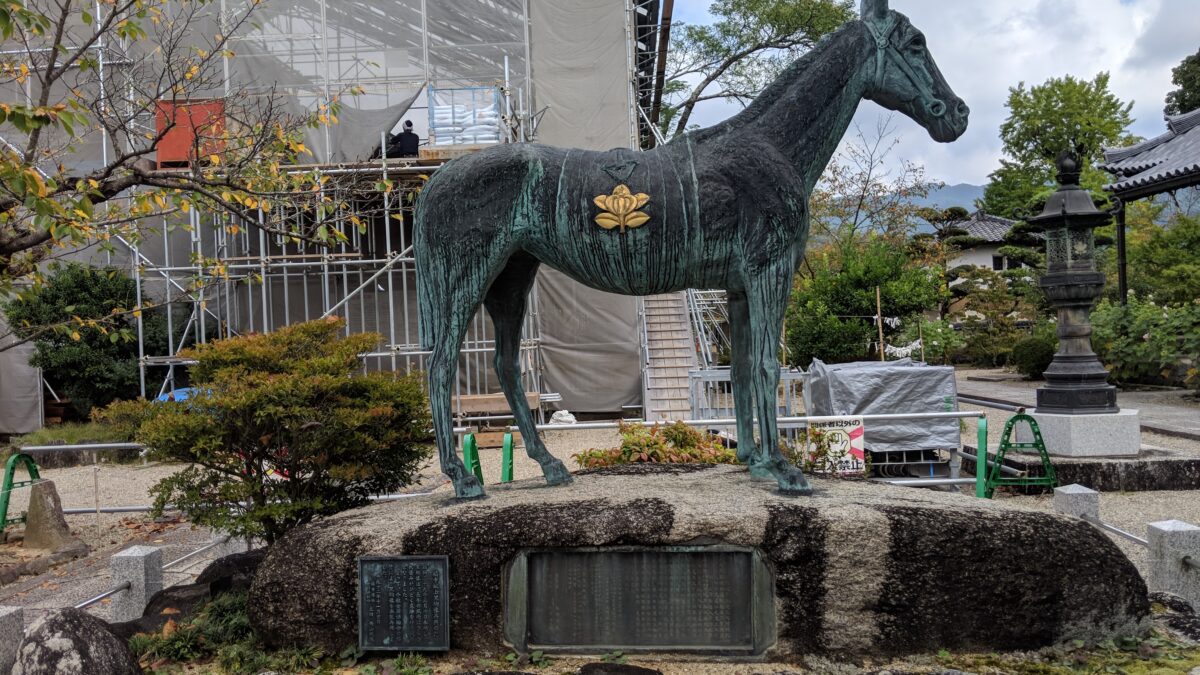(Nara ASUKA)
ASUKA area in Nara had been the center of politics and culture in Japan from the end of 6th century to the beginning of 8th century where the court capital for the emperors had been set as the stage to create the ancient Japan country.
ASUKA culture had been flourished as the center town of Buddhism. The historical big events such as Taika Reform and so-on had occurred in this area.
Buddhism temples and ancient tombs for emperors, court Imperial families and powerful families had been constructed in this ASUKA area.
However, if you visit ASUKA, you will find that there are almost no palaces and temples remained which had been constructed in ASUKA period.
ASUKA area had not been the tour spot until 1973 when Takamatsuzuka Tomb was excavated with finding of stone chamber and mural brilliant paintings in ASUKA. After the big findings, ASUKA has been paid attention as the tour spot in Japan.
ASUKA has been protected against the wave of urban development during the period of high growth as the national important cultural property.
We can feel special atmosphere by imaging the events in ASUKA period and breezing the air of ASUKA where relaxed rural scene with several ancient ruins and temples remained can be found.
1) The place where you can experience:
(Strolling in ASUKA):
(a) Relaxed rural scenes in ASUKA:
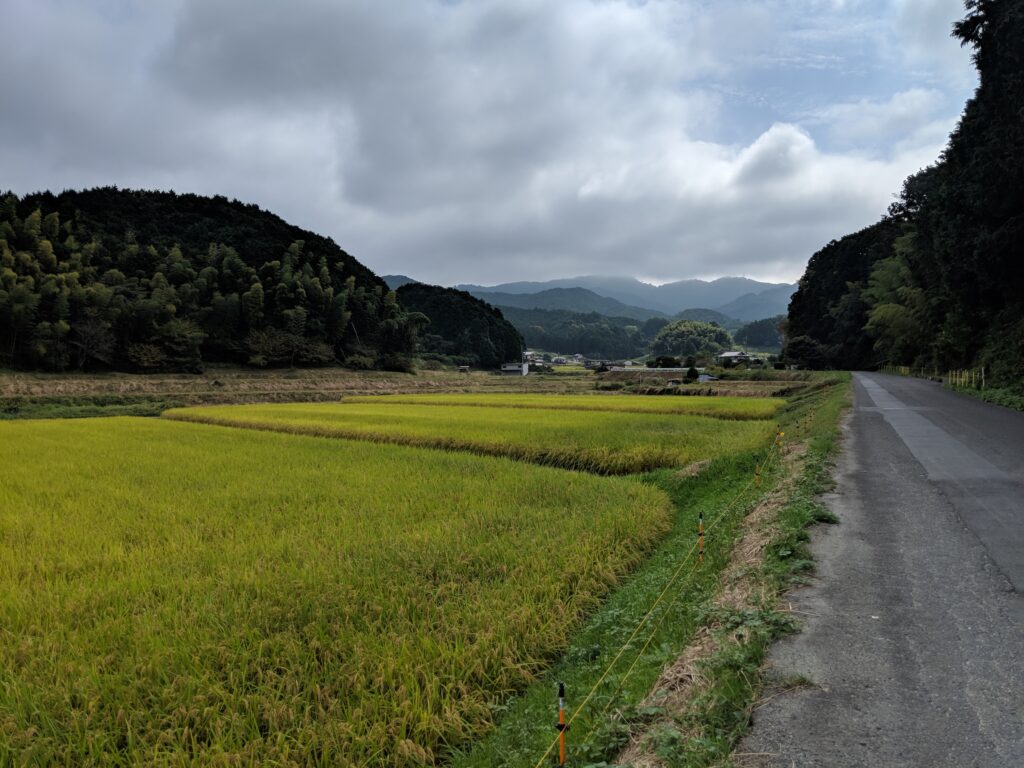
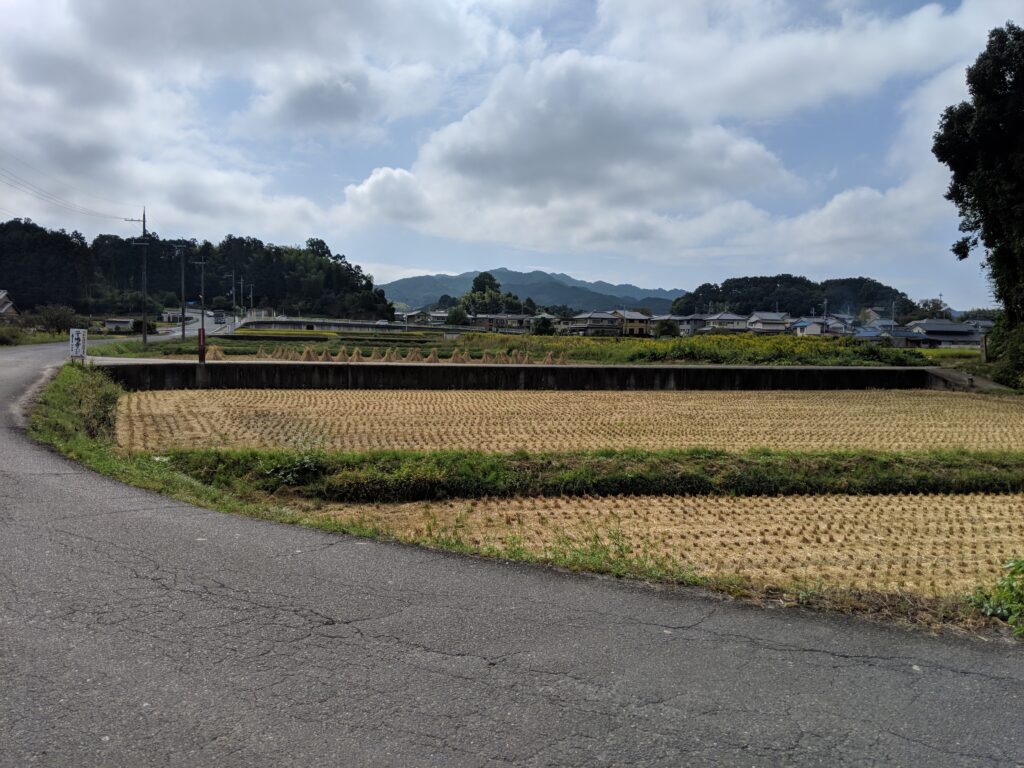
(b) Palace ruins:
ASUKA Itabukimiya: Asukakyo Site:
ASUKA Itabukimiya Site is the Palace where Emperor Kyogoku had transferred the capital in 643 and during Taika Reform in 645 as the historical big event in Japan, Prince Naka no Oe and NAKATOMI no Kamatari assassinated SOGA no Iruka.
In 655, Empress Saimei ascended the throne and she transferred the capital from here to Kawaharakyo due to the fire occurrence in Asukakyo Site.
As the result of the continuous excavation and research, Ditches constructed by stones were found and it is guessed that remains of the Site were divided by two layers on top and bottom and several generations of the palaces were set on this place.
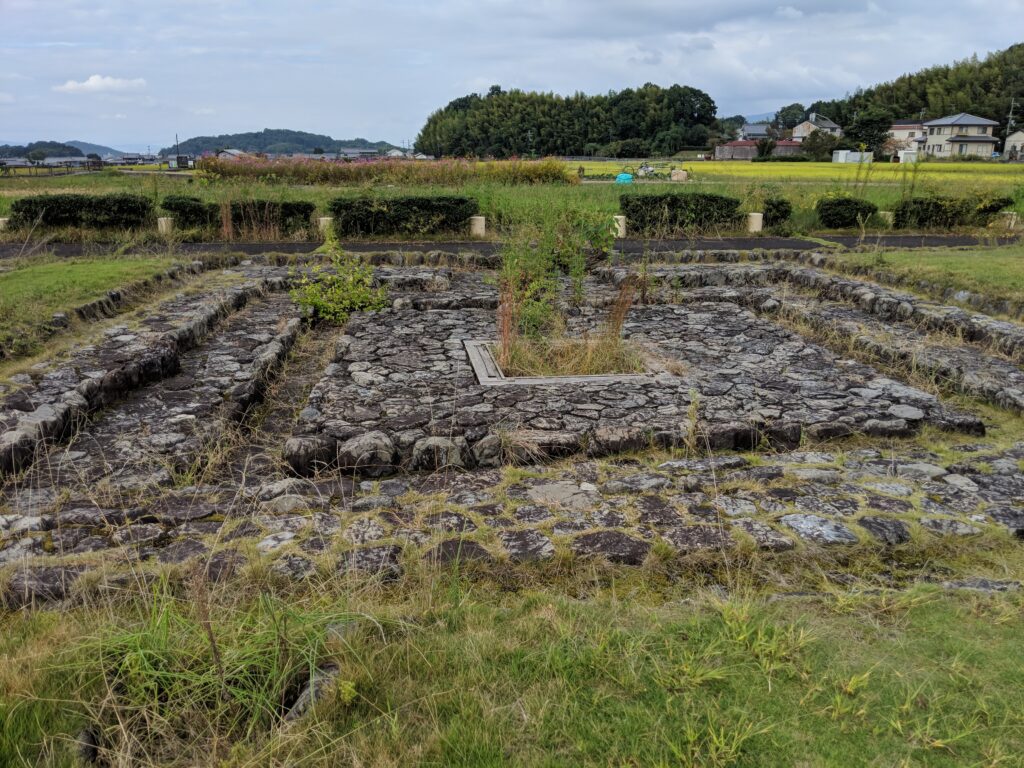
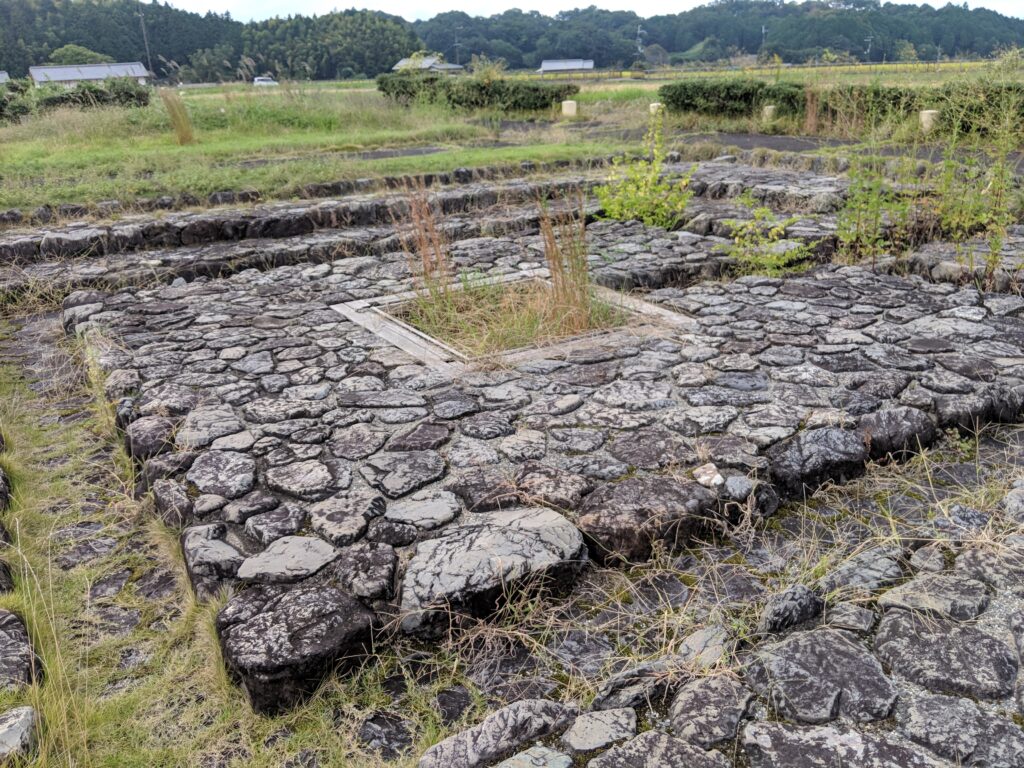
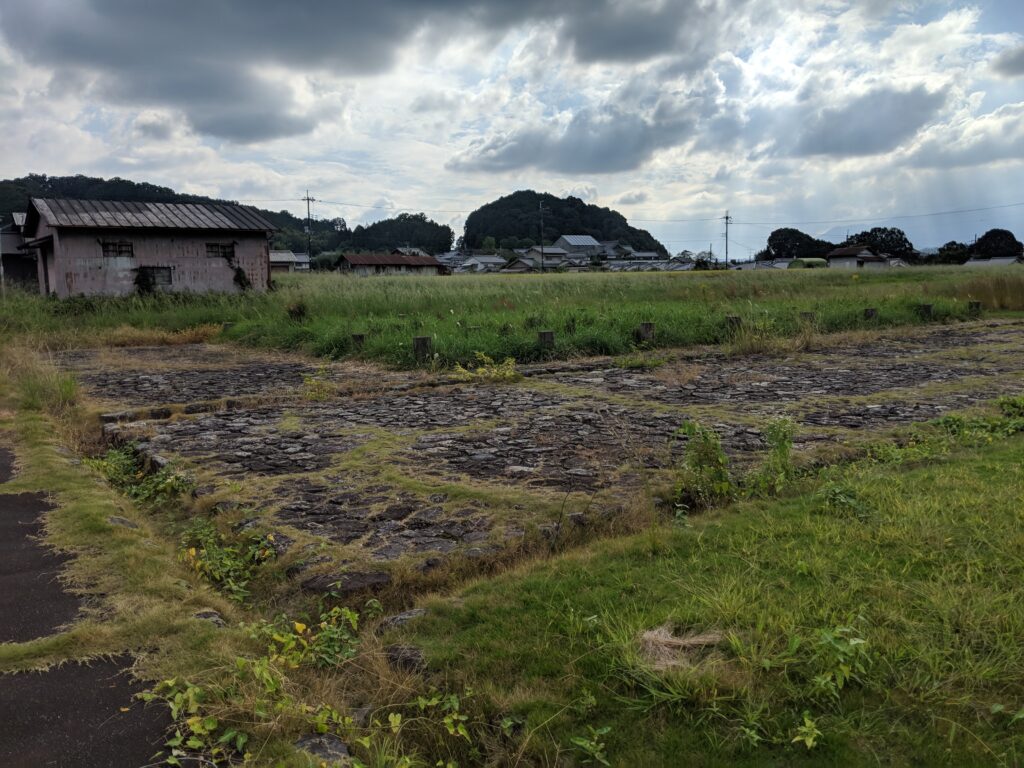
(c) Ishibutai-kofun Tumulus:
Ishibutai-kofun Tumulus was constructed in 6th century as the end of latter half of Tumulus period. The name of “Butai” means a Stage. The reason it named is that the upper side of the exposed ceiling stone is plane due to the loss of the banking.
This is stone chamber which is constructed by piling up the big 30 pieces of stones. The tomb hill is the rectangular tomb which is 50 meter wide and 50 meter long with 8.4meter wide of ditch surrounded. The length of the stone chamber is 19.1 meter, the height as 3.5 meter and the depth as 7.6 meter. It is said that this tomb was constructed most likely for SOGA no Umako who was one of the greatest politician in ASUKA period.
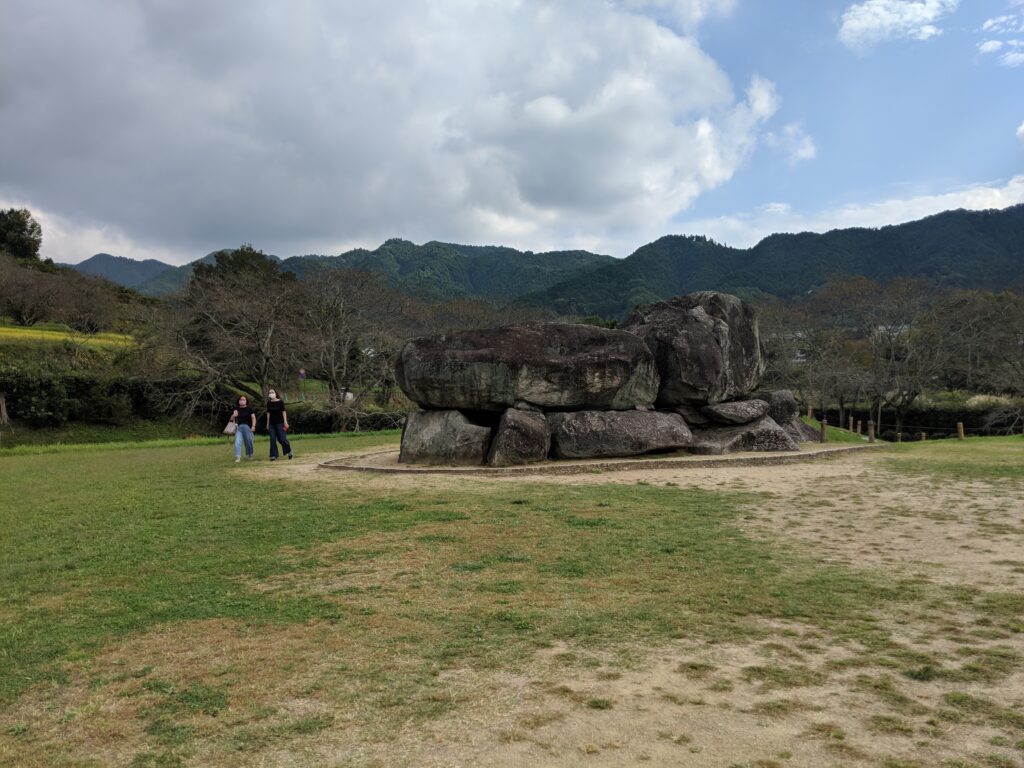
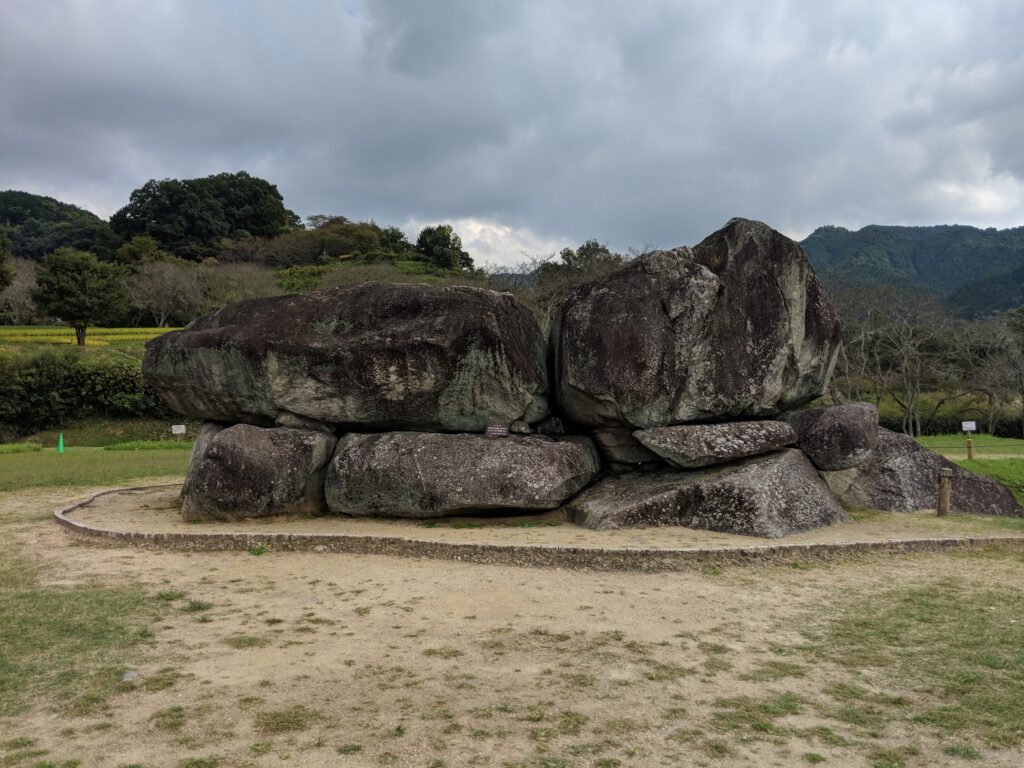
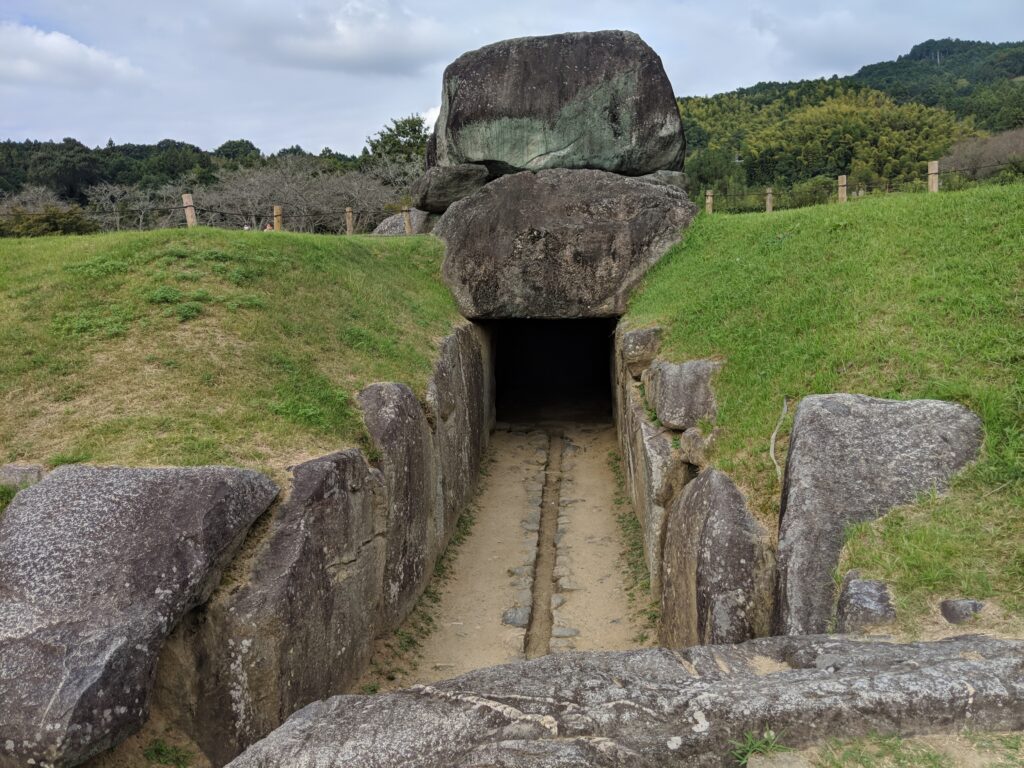

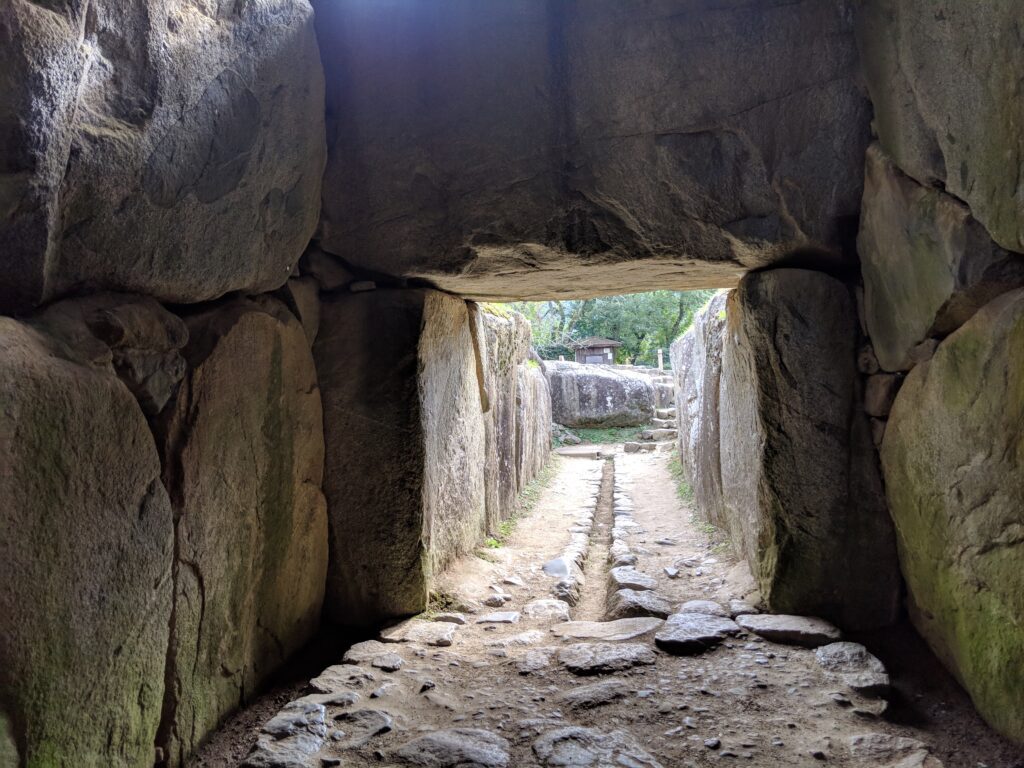
(d) Takamatsuzuka Tomb:
Takamatsuzuka Tomb is a small circular tomb with 18meter diameter and 5meter height. During the excavation and research in 1972, the rich colored mural paintings, bronze mirror with a design of animals and grapes, metal sword ornaments and so-on were found.
Inside the stone burial chamber, blue dragon on east wall, white tiger on west wall, Black tortoise on north wall, human paintings on both side of east and west and Chinese constellation on the ceiling were found to be painted which have us guessed that those had been influenced by ancient Chinese thought. The size of the chamber is 265 cm north to south and 103cm east to west and 113cm height.
We can not directly watch those inside the chamber because it is closed to preserve them , therefore, we can confirm the accurate copies and models of those inside the stone burial chamber in Takamatsuzuka mural museum near the tomb.

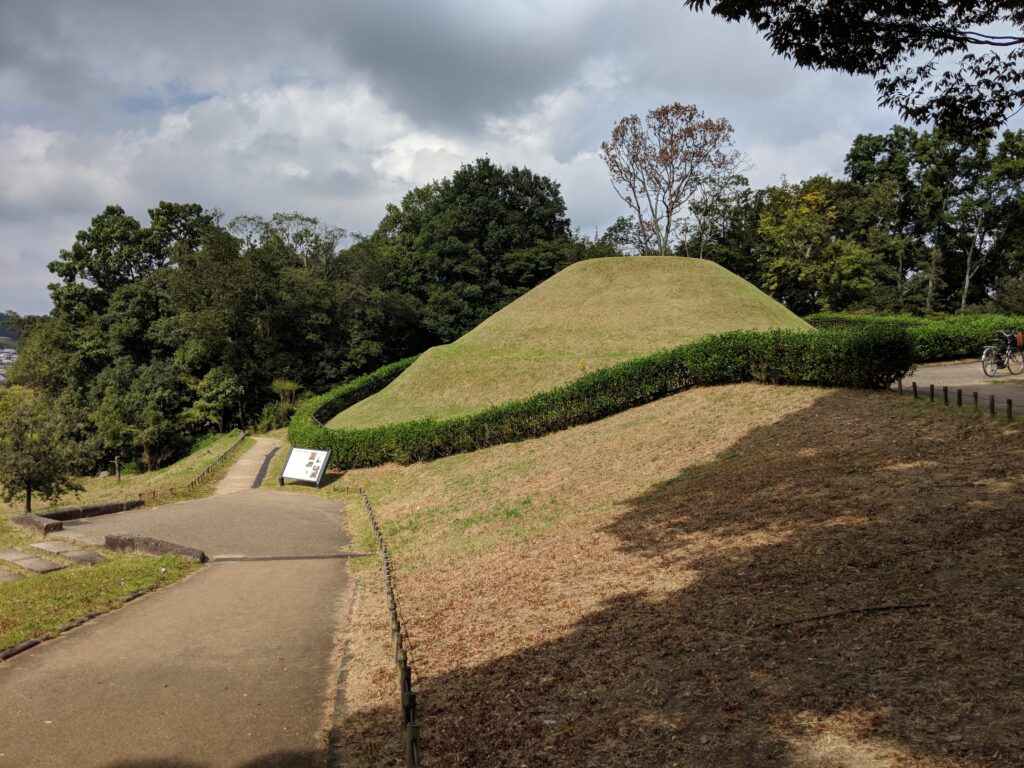
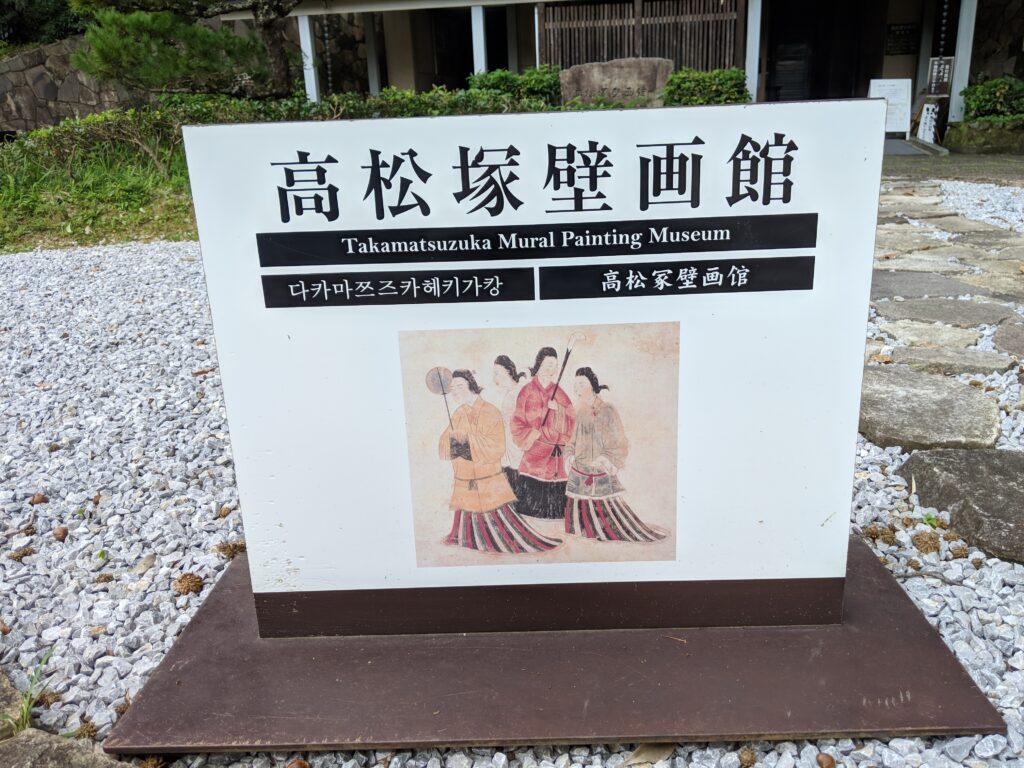
(e) Kitora Tomb:
Kitora Tomb is located in 1km south from Takamatsuzuka Tomb and it is guessd that this Tomb was constructed during the end of 7th century to the beginning of 8th century. It is a circular tomb of two layer with 13.5meter diameter and 3meter height. By detail investigation inside the stone burial chamber by using an ultra-small camera in 1998, blue dragon on east wall, white tiger on west wall, Black tortoise on north wall, and Chinese constellation on the ceiling were found to be painted.
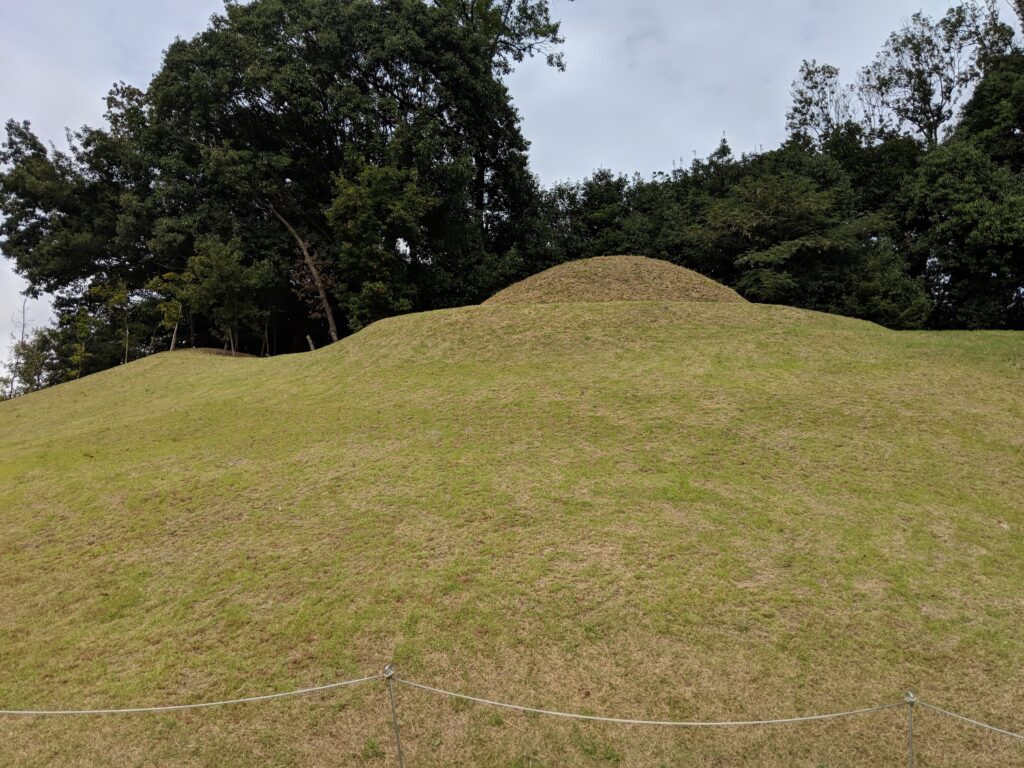
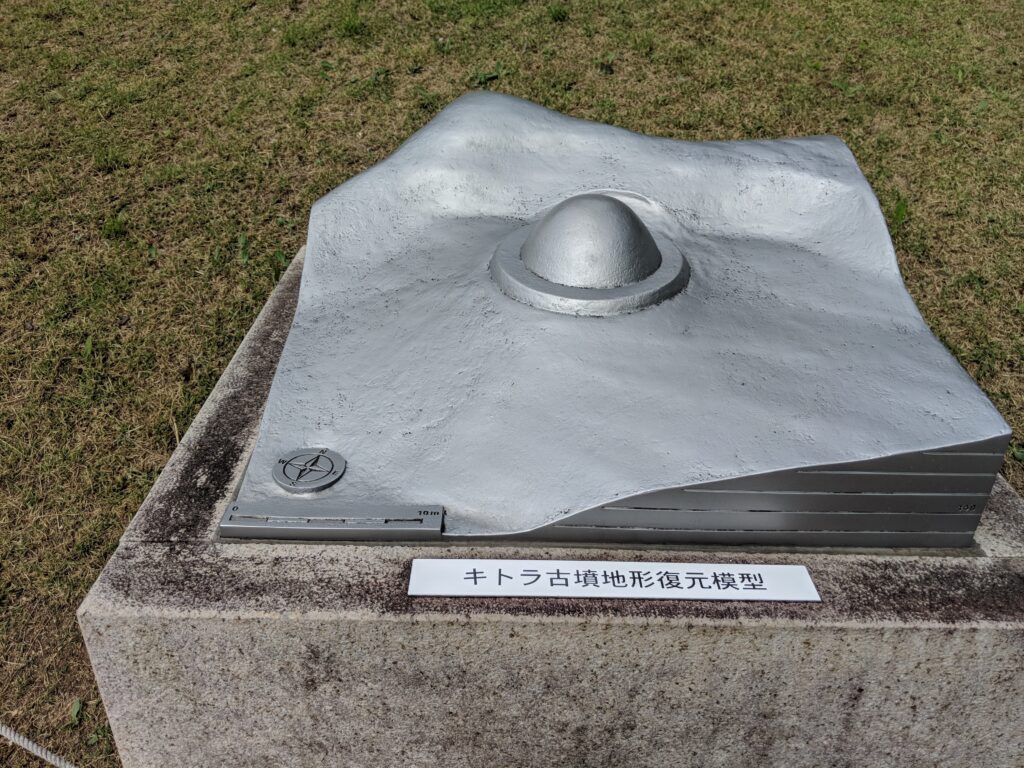
(f) Emperor Tenmu & Jitou Tomb:
This Tomb had started to been constructed from 687 for Emperor Tenmu and buried in this tomb.
After that, Emperor Jitou who was the wife of Emperor Tenmu and for the first time cremated as an emperor was buried together with Emperor Tenmu in 703.
This tomb is the rare example which is identified accurately as the emperors’ name among lots of Emperor Tombs from ancient period.
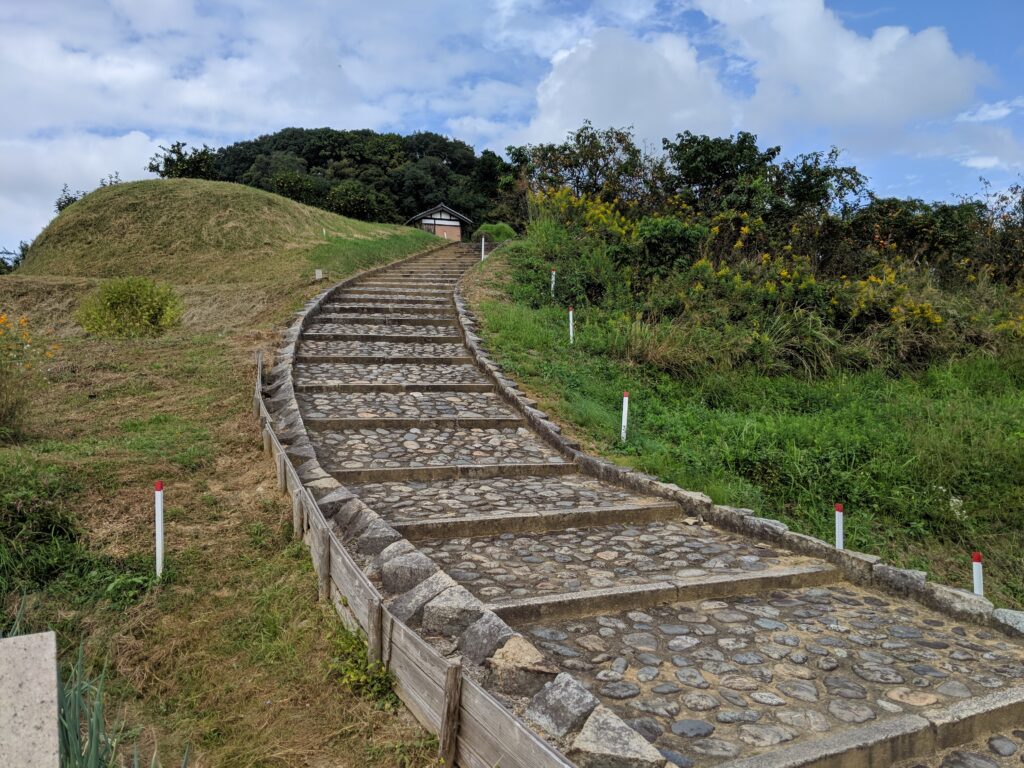
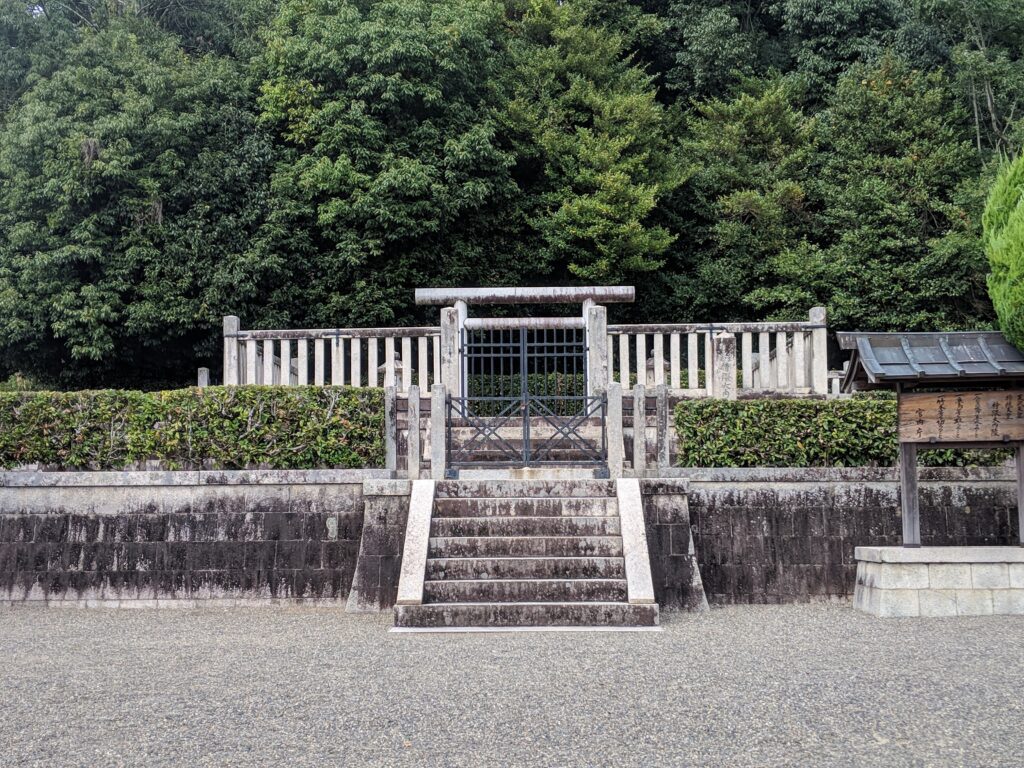
2) The place where you can enjoy:
(Asuka-dera Temple Ruins):
Asuka-dera had started to been constructed in 588 by the wish of SOGA no Umako who was one of the greatest politician in ASUKA period.
It was completed in 596 of the era of Empress Suiko and it is the first Buddhism temple in Japan.
This temple in the Asuka period used to be the enormous temple almost 20 times wider than that of current one. As the investigation result of the excavation and research starting from 1956, it was found that the arrangement of temple buildings was the special type as one tower and three main halls.
This style is called “Asuka-style”. As this temple the center of Asuka capital during 100 years, it had been the center of politics and culture in Japan where the court capital for the emperors had been set as the stage to create the ancient Japan country and ASUKA culture had been flourished as the center town of Buddhism.
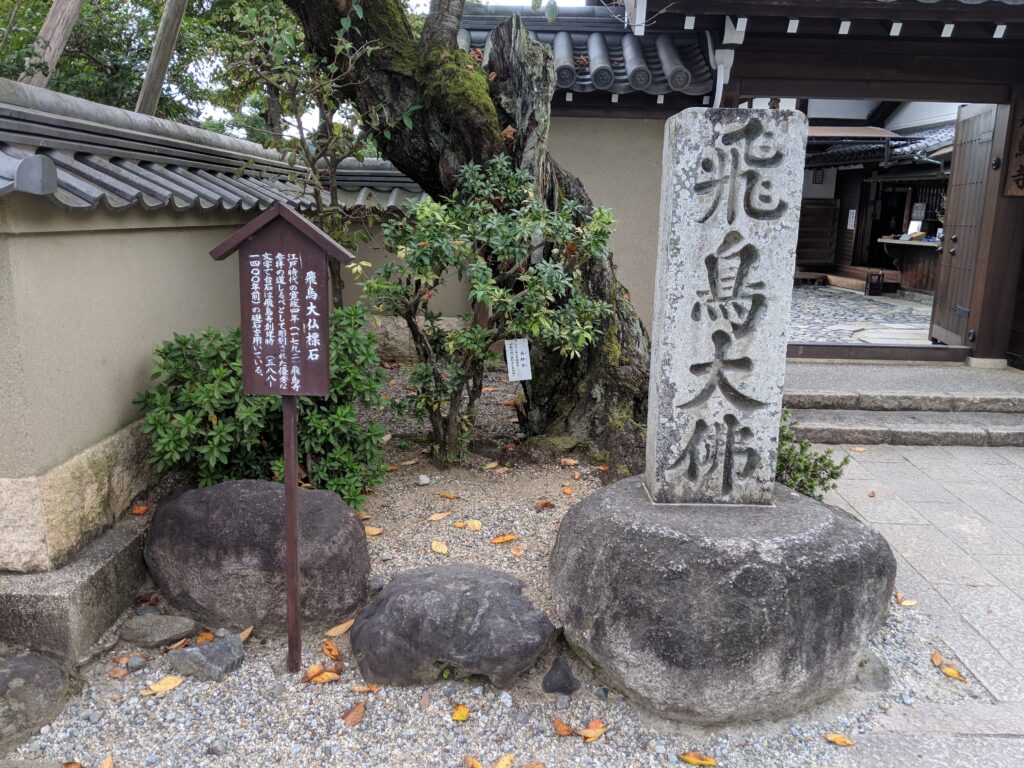
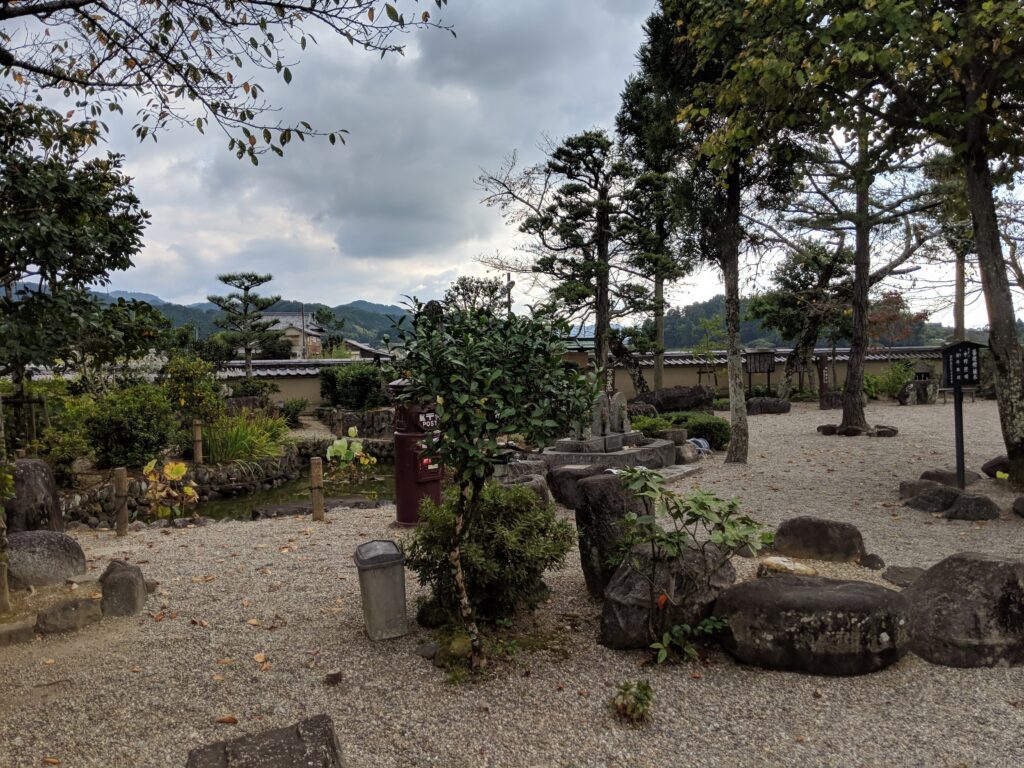
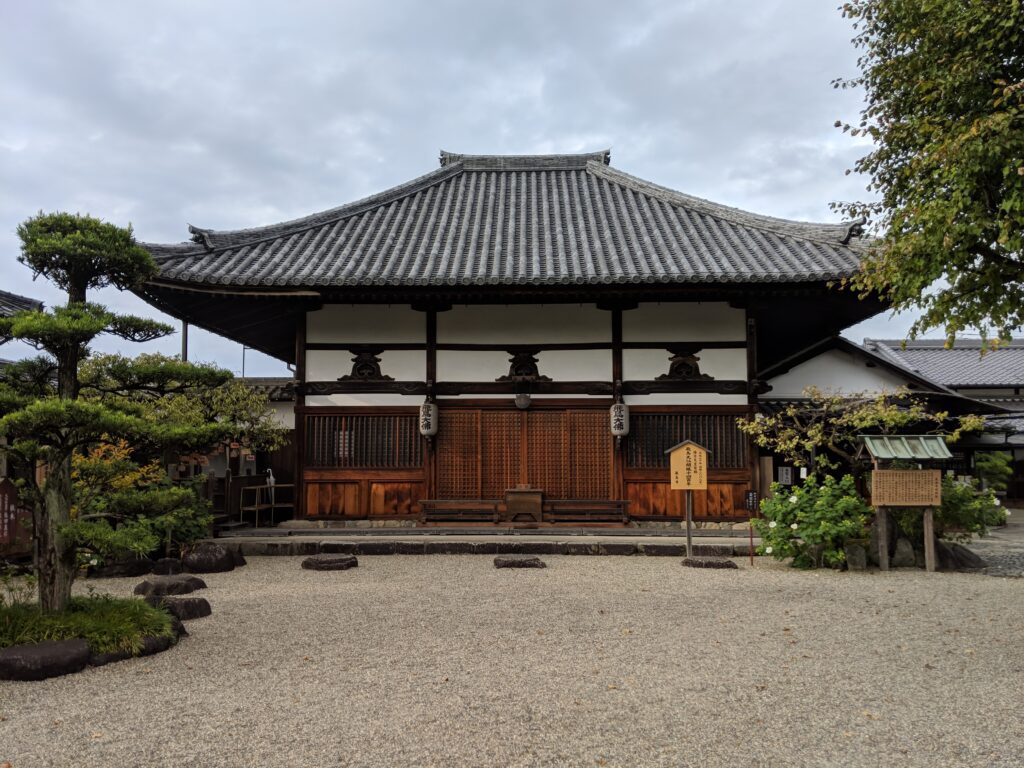
Great image of Buddha: Seated statue of Shara Nyorai:
It is said that this Buddhism statue is the oldest one in Japan and was constructed in 606 as the principal image of the main hall of Asuka-dera.
This statue 2.75meter height has been survived by been recovered from various fires from ancient time-frame even if all temple buildings had been burned out. This statue is the only one survived in Asuka period and it has been watching the change of times during 1400 years in the same place.
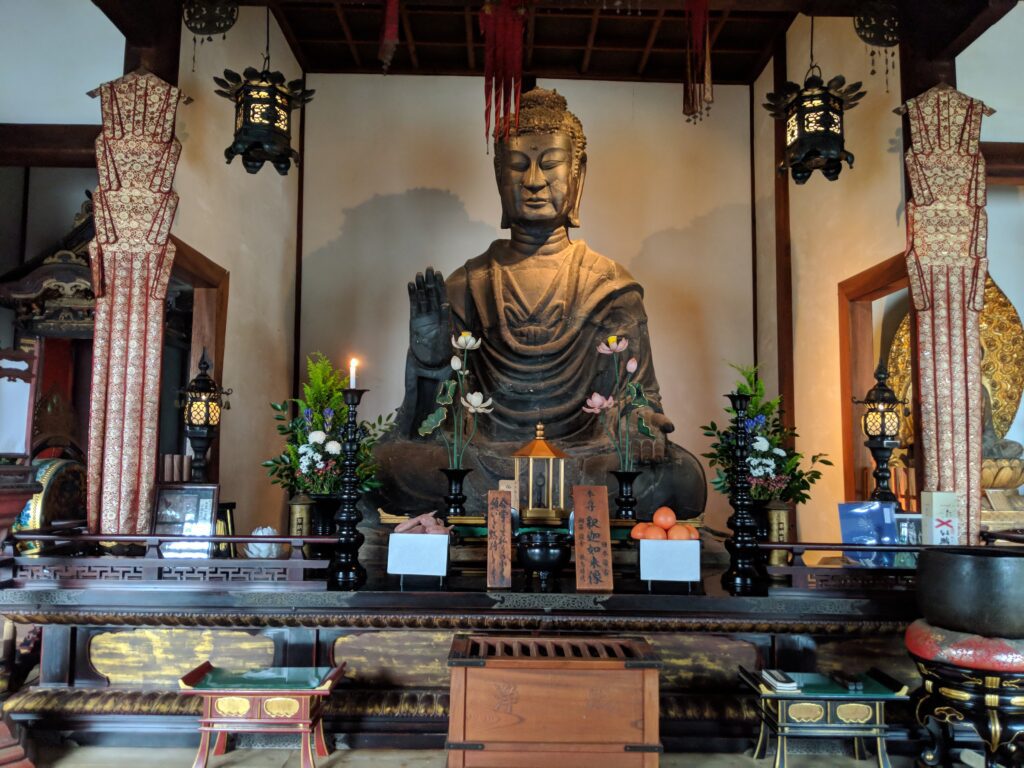
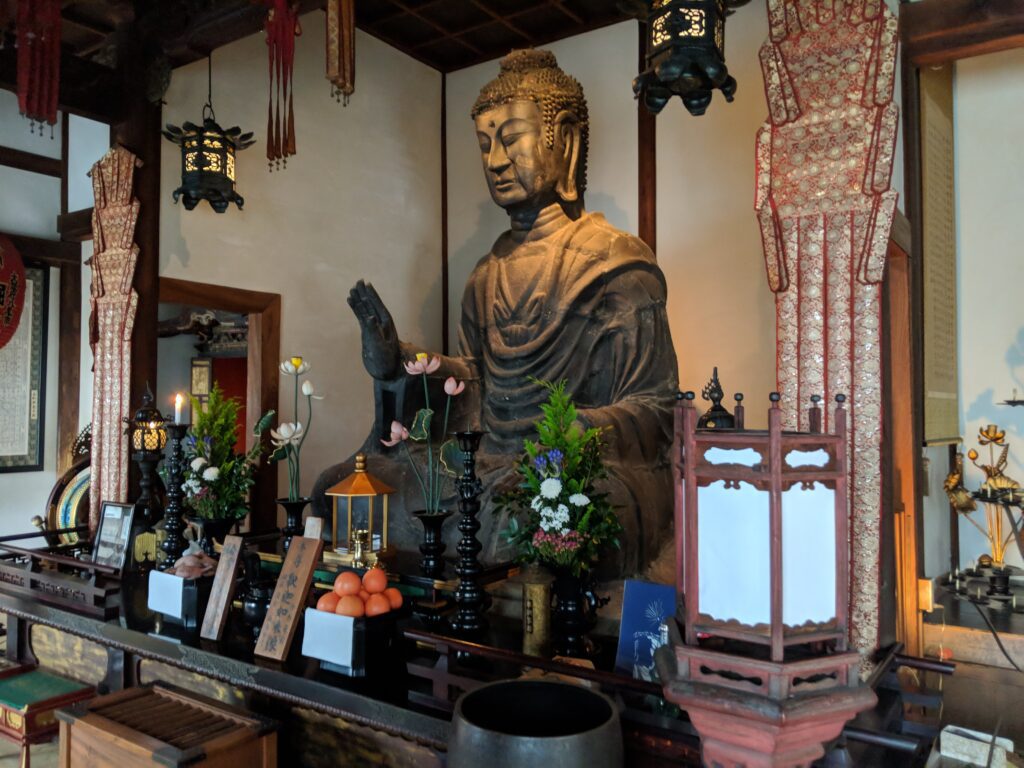
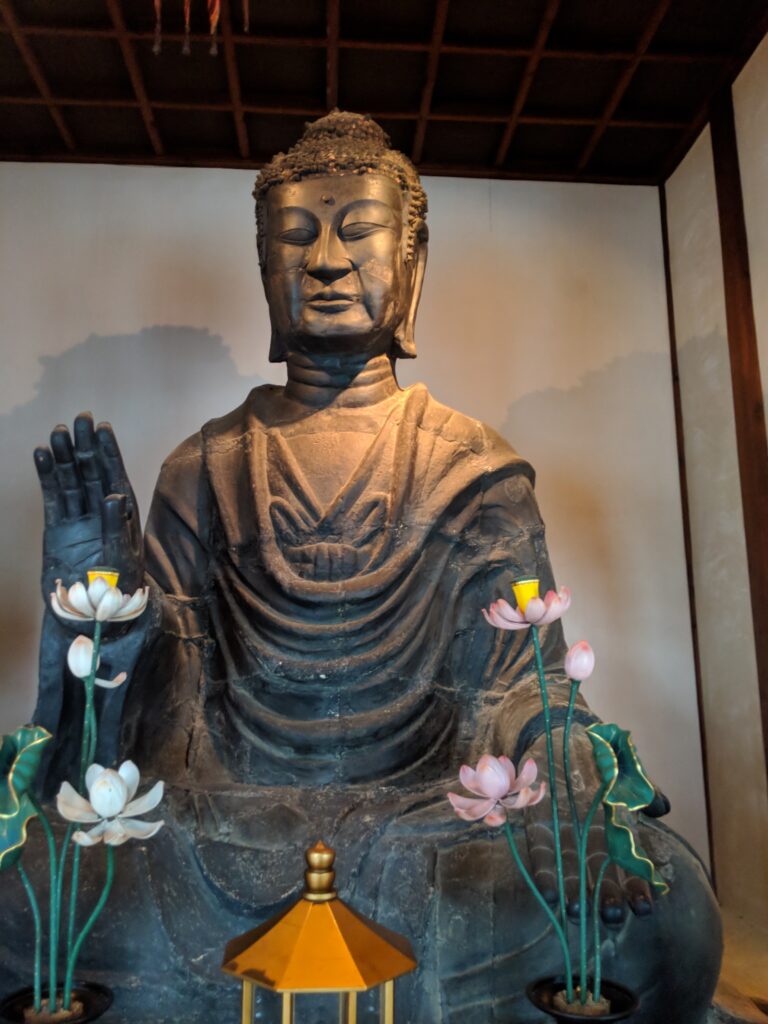
Kubi-zuka(burial mound for heads of SOGA no Iruka:
A five-ring pagoda made by granite is standing the place where you walk through the precincts of ASUKA-dera temple. This pagoda is called Kubi-zuka(burial mound for heads of SOGA no Iruka.
During Taika Reform in 645 as the historical big event of Japan in ASUKA-kyo Site, Prince Naka no Oe and NAKATOMI no Kamatari assassinated SOGA no Iruka who was the top politician in ASUKA period at the time. It is said that the heads of SOGA no Iruka had attacked them with soaring above the air when he was killed and they had set the pagoda to calm down the spirit of him.
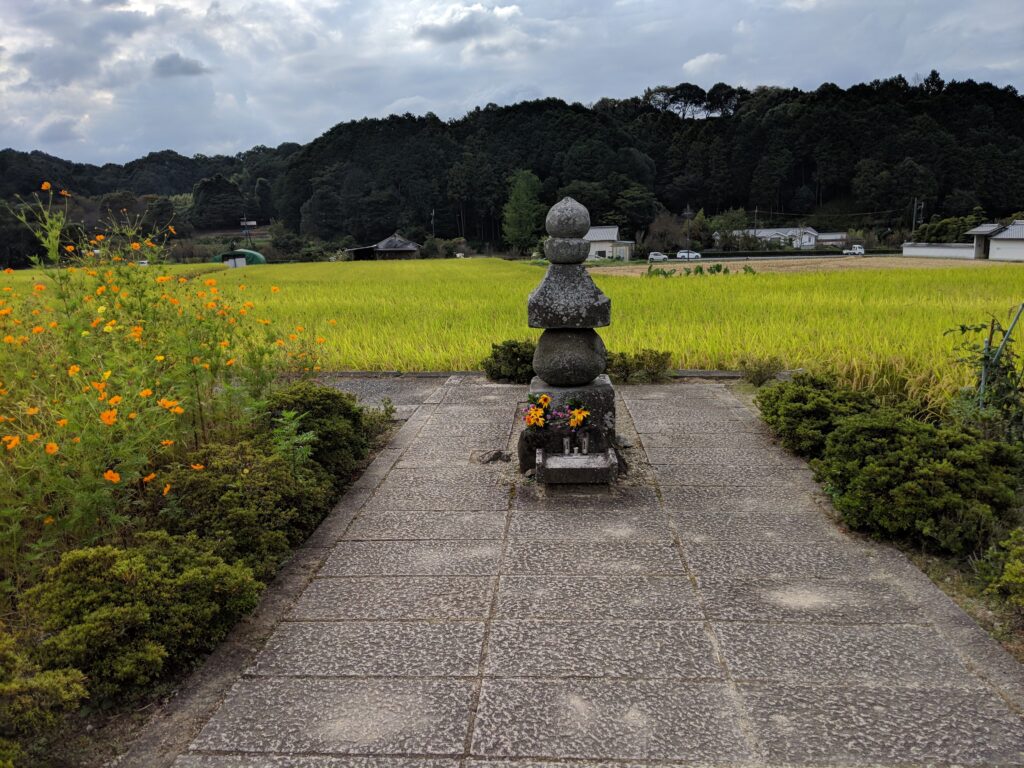
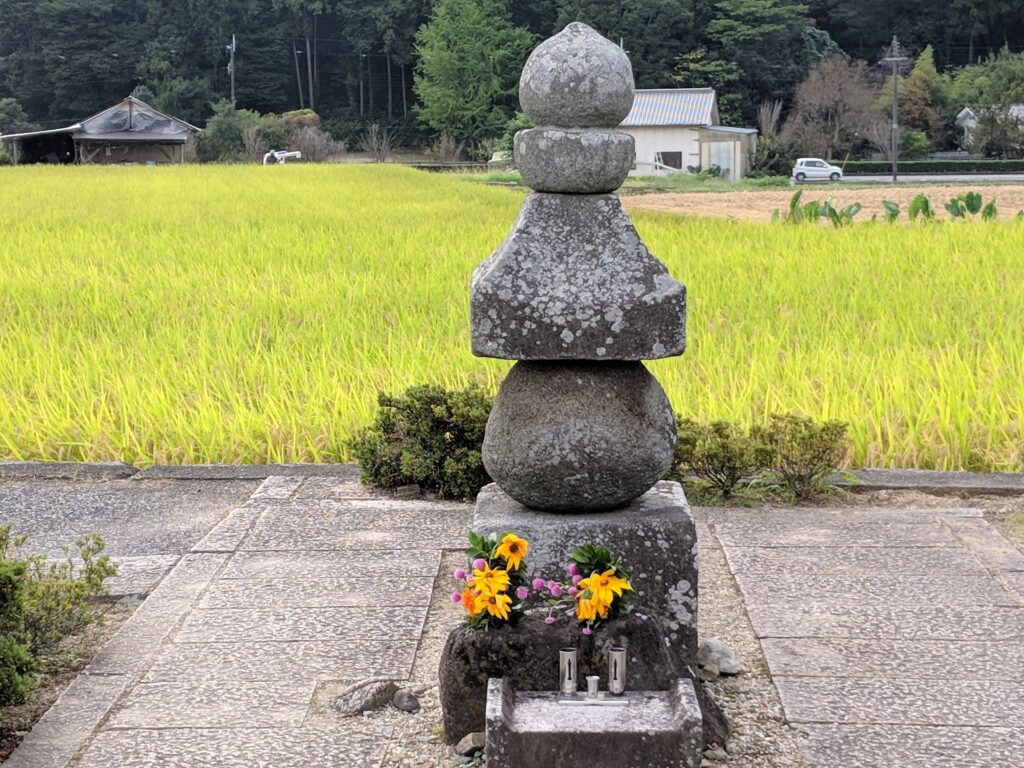
Tachibana-dera temple ( The temple where Prince Shotoku was born.):
This temple is one of the seven temples which Prince Shotoku had constructed and the place where he was born. At the time this temple was built, Nakamon-gate, tower, main-hall and lecture-hall were arranged toward east in a line. At present, only the tower site and a cornerstone of a main hall are remained. You can see the stonework set in ASUKA era called “two face stone” near Taishi-den hall which represents the two-phase of good and evil possessed by human. Also, the horse status is set near there. which Prince Shotoku has ridden the horse to walk through the road of about 20km between ASUKA and IKARUGA where he had lived as a residence during his later stage of his life.
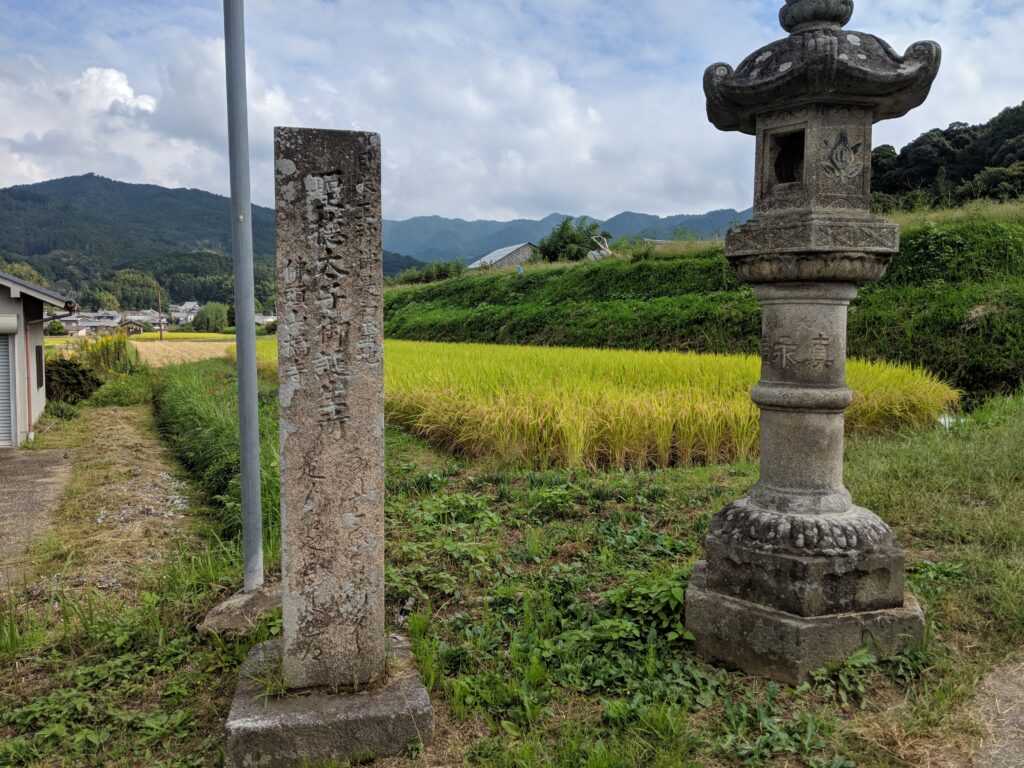
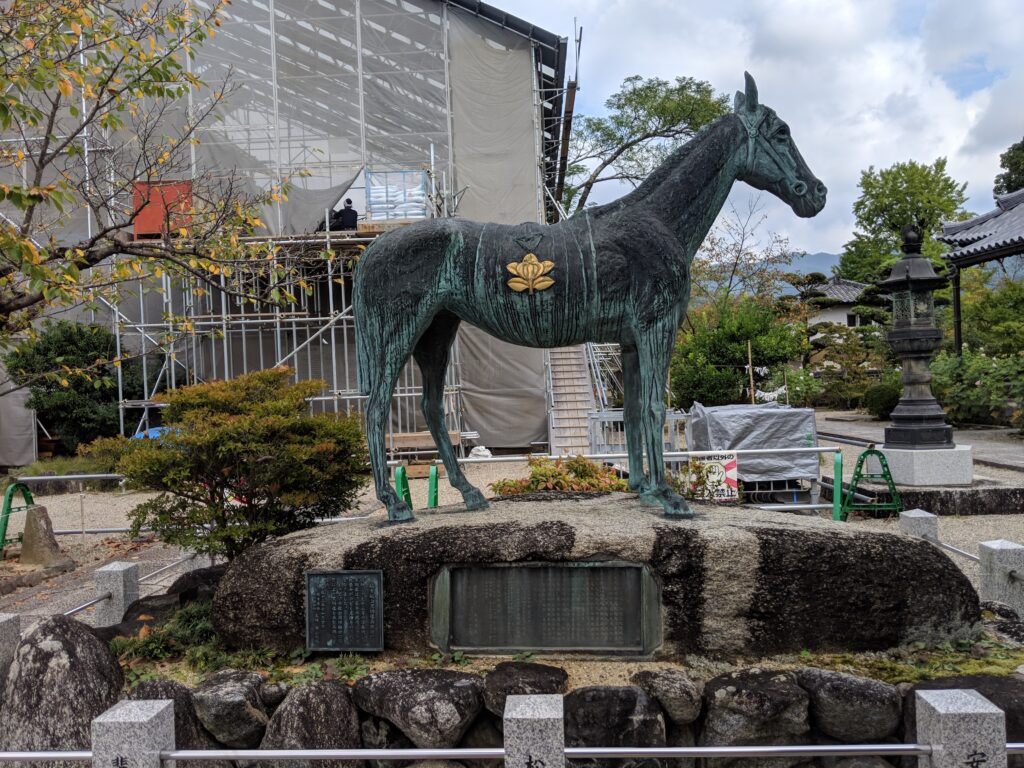
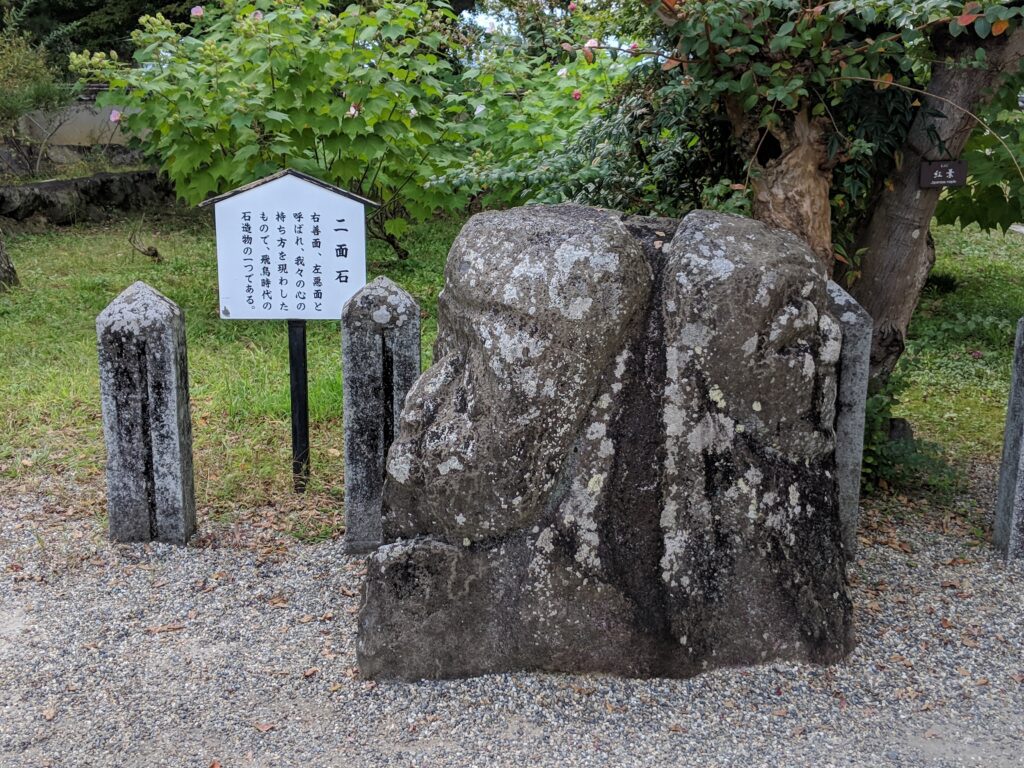
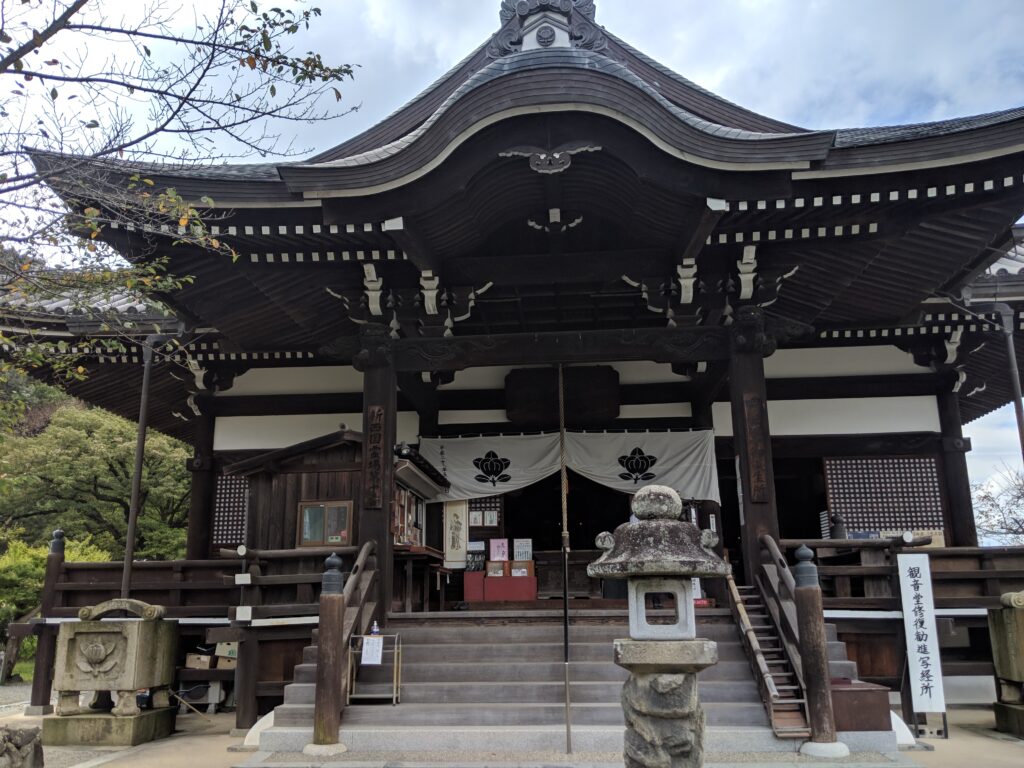
(ASUKA turtle-shaped stone structure):
This stone structure was found by the excavation and research in 2000. It is said that this area near the structure was the place where the religious service was held during the period of emperor Saimei in mid of 7th century.
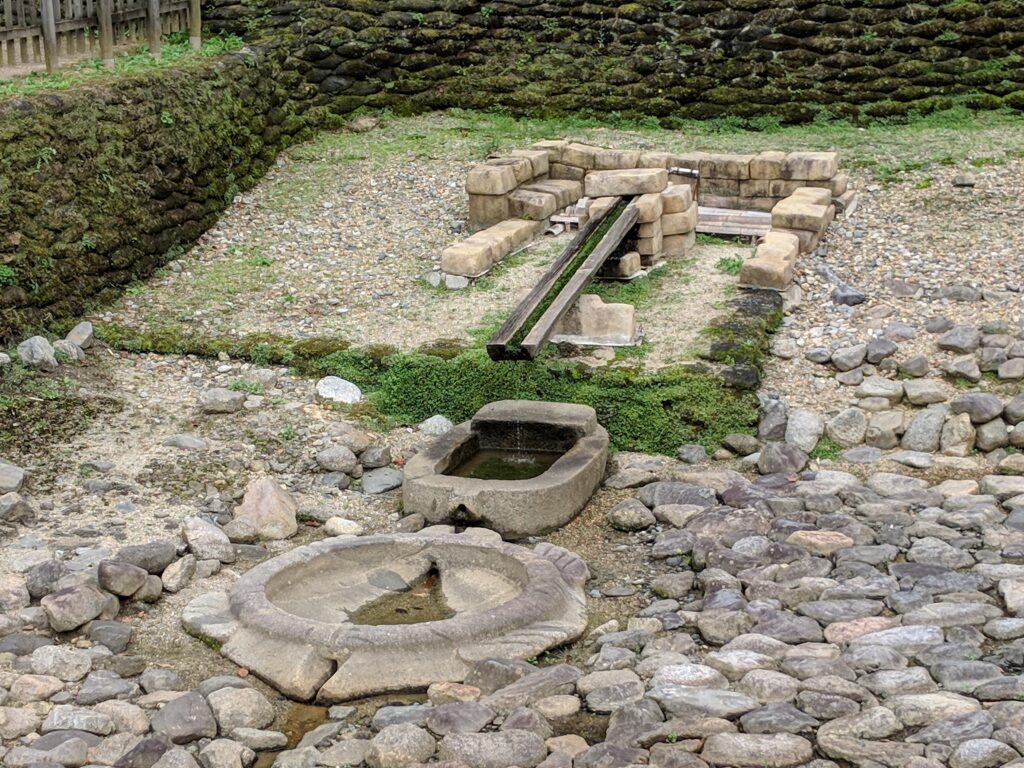
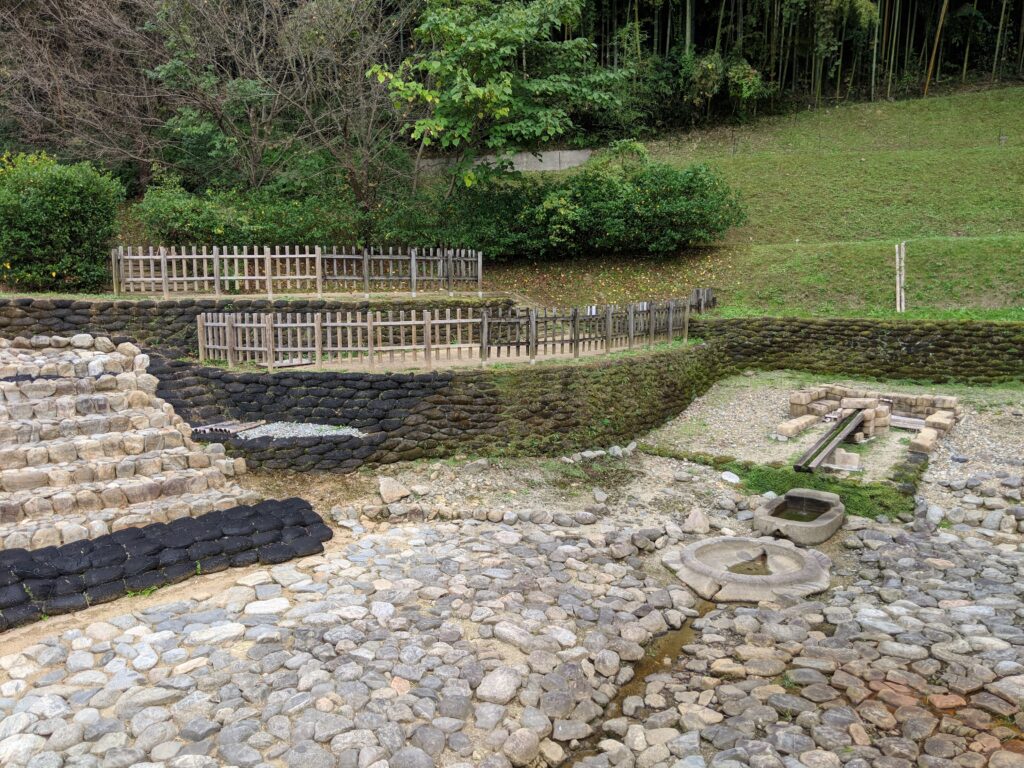
(Turtle stone):
This stone is located in the field about 600meter west from Tachibana temple. The stone is made by granite with 4meter length, 2meter width and 2meter height whose face is carved like a turtle.
This stone shape is as if a turtle is crouching down and has been called as “Turtle stone” from Heian era (794 – 1192). It is said that this stone was “Kekkaiseki” which had divided this world in ASUKA from the land of the dead for Imperial Tombs.
At present, this area is registered as National historic site.

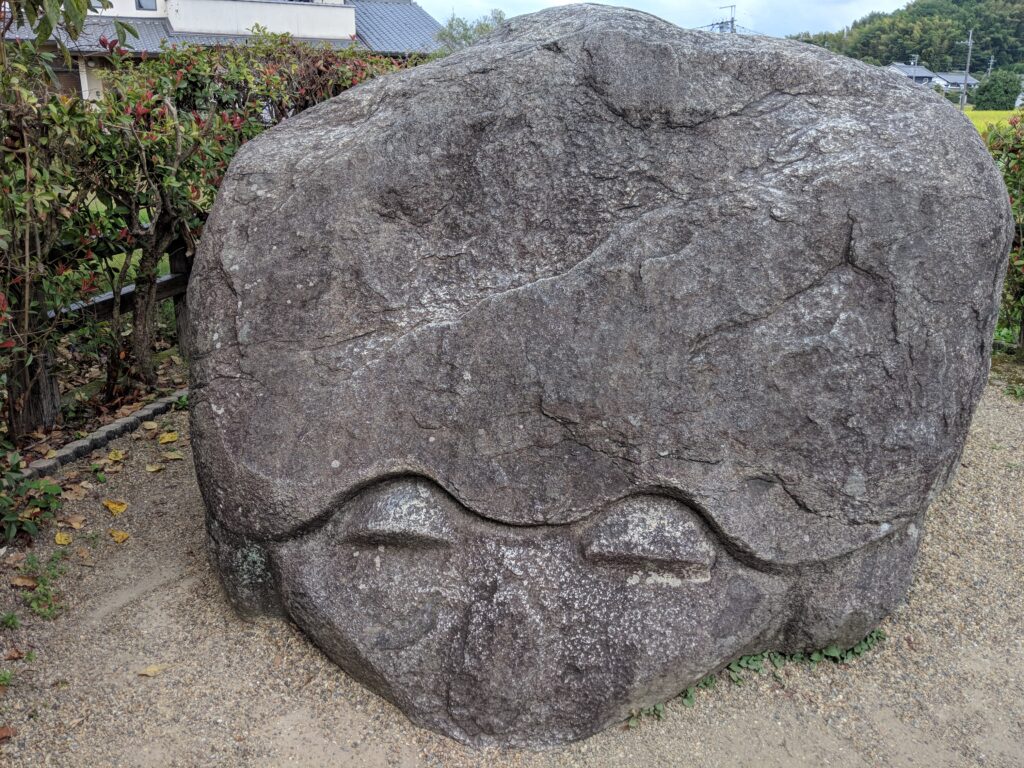
Japan Van prepares various tour itineraries for you to enjoy the view in Japan.
The minimum itinerary days is more than 5 days.
Contents of our service: We can arrange a car and a National Government Licensed Guide Interpreter for your trip.
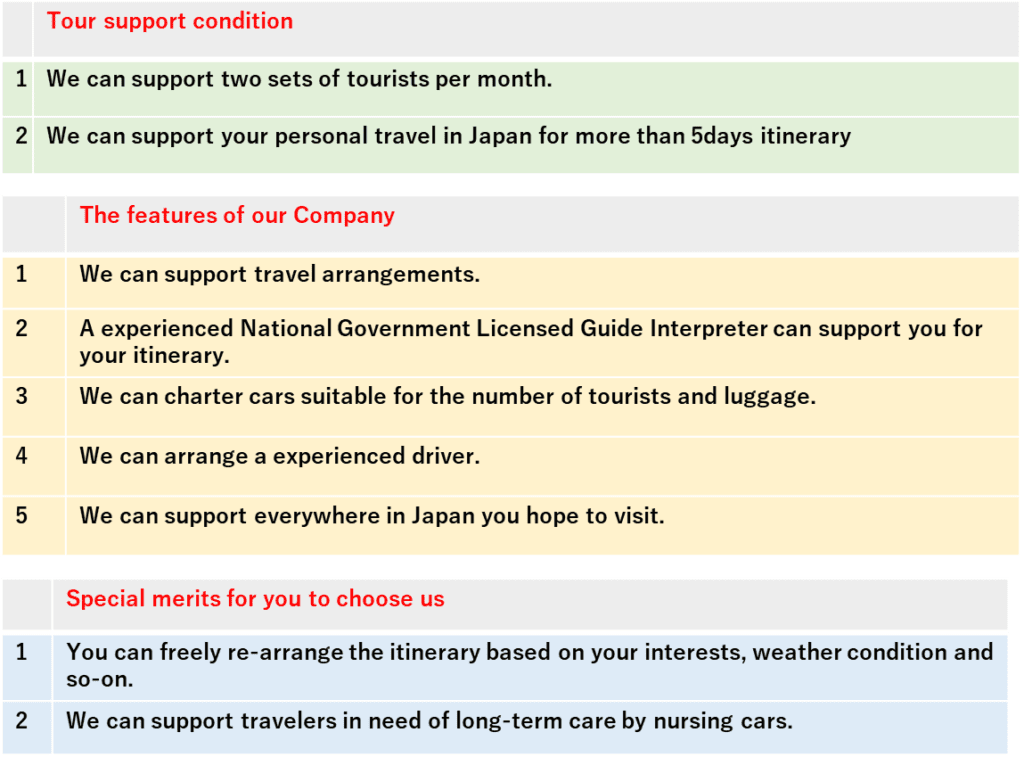
| Car charter and a guide condition | |
| 1 | Number of tourists: 2pax – 12pax |
| 2 | Charter time and guide condition: 12 hours (including 4 hours resting time) |
